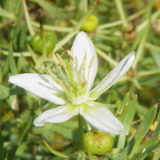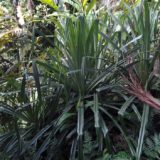Mandragora of the Nightshade Family

Mandragora officinarum L.
Location: Africa, Europe, Asia, and Abundant in the Himalayas
Mandragora (Mandrake) is a small perennial with no stem that grows less than 1 foot high. Normally it has a thick root which splits many different ways to provide stability in the ground. The leaves are messy, crinkly and oval in shape. There are normally small (slightly larger than an inch in length) flowers, white, blue, green or purple in color. Mandrake emits a really sweet and attractive scent from its yellow berry.
Mandrake has one of the deepest, richest histories with providing medicinal value, recreational value and magical value throughout history. Mandrake has not been rivaled by any other plant or herb in terms of history of use and value in culture throughout European folklore. Mandrake technically comes in six different species, but the most relevant was M. officinarum. This species played the largest role when it came to hallucinogens throughout and before the Middle Ages. Mandrake contains a good lot of tropane alkaloids hyoscyamine, scopolamine, atropine, cuscohygrine, and mandragorine.




